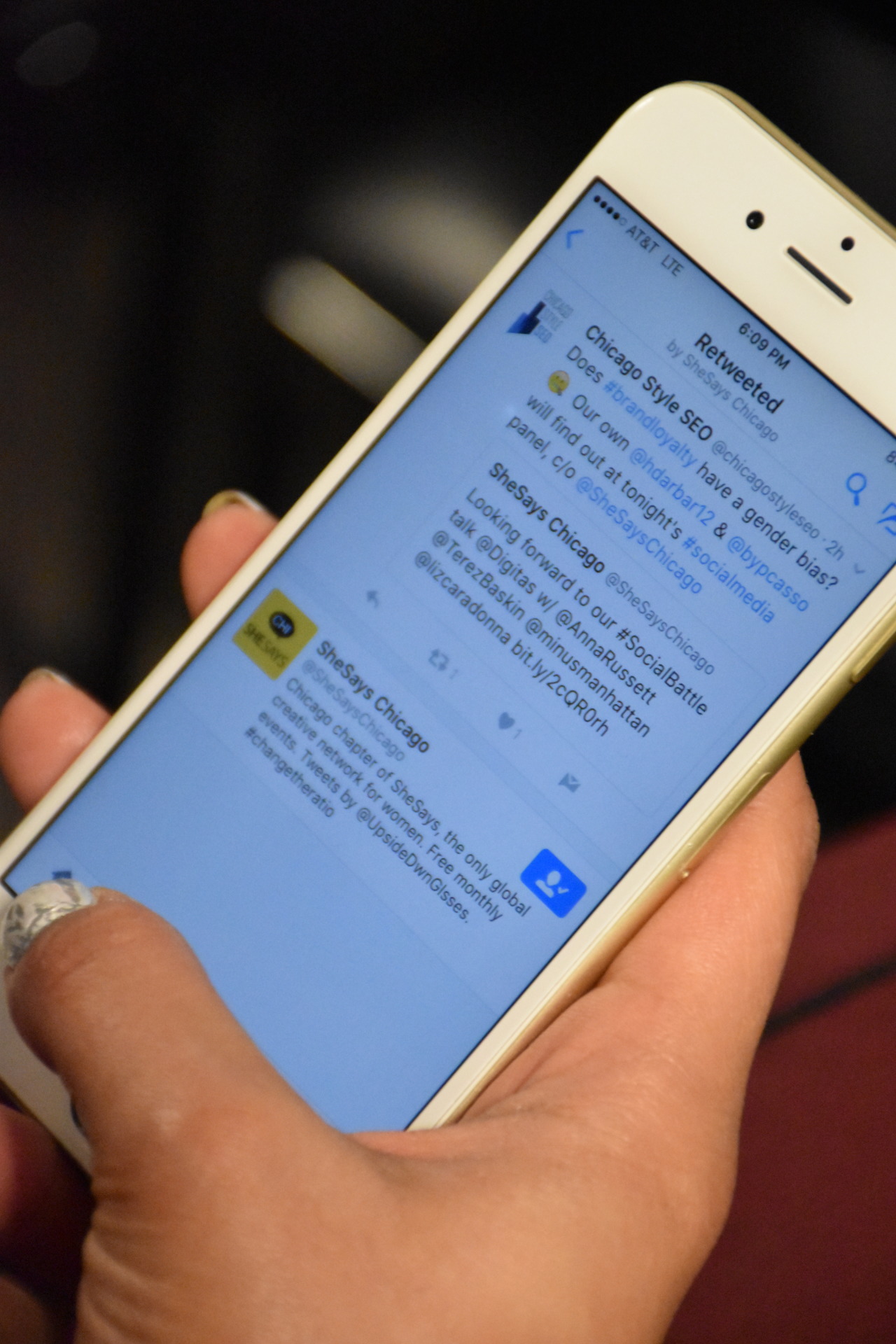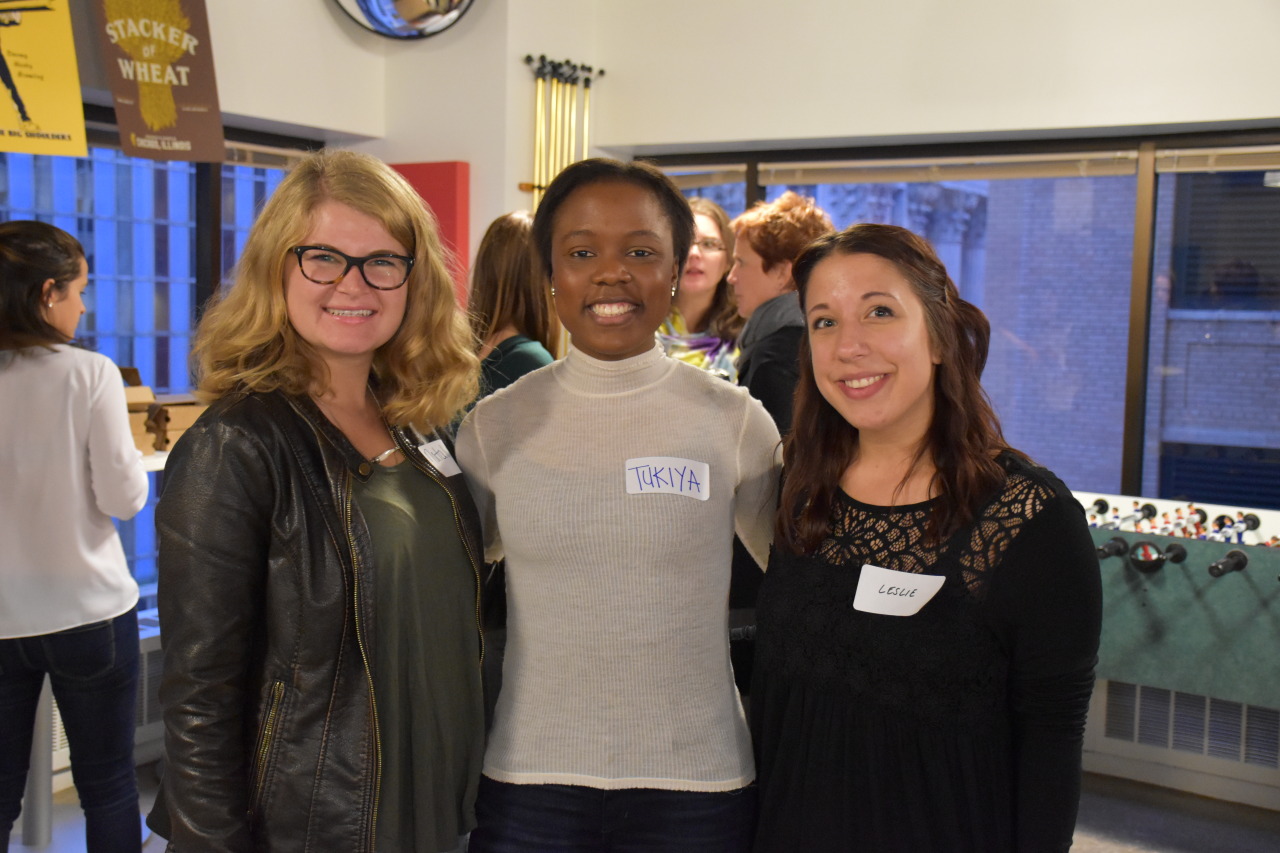November 9th, 2016
Chicago
Social and the Sexes: Do men and women use social media differently?
by Lidia Varesco Racoma, photography by Anna Olsztynska
SheSays Chicago brought together four local social media leaders for a lively discussion at Digitas LBiabout how men and women use social media differently. Moderator Anna Russett is a Strategist at Havas Worldwide Chicago and a Social Media Influencer with a YouTube Channel. Panelists includedTerez Baskin, Social Media Expert, Author, and SEO consultant, Liz Caradonna, VP/Director of Social Strategy at DigitasLBi and Chase Turner, Creative Strategist at Tumblr.
The underlying theme was: you really have to listen to your audience. Hear what the panelists had to say on social media topics ranging from online behaviors to gender roles.
Are demographics dead?
Define segments psychographically (early adopters, cool dads, etc). Look outside your demographic. Look at it from the position of job title, interests, etc.
Life stages will always apply. – Liz Caradonna

Are traditional gender roles still present in social media today? Are marketers redefining gender roles?
Social media allows you to surround yourself with people who believe what you do.
It’s important to surround yourself with people who have different thoughts. – Anna Russett
Every person has an opinion or platform. It’s not enough just to sell something effectively—what point are you making about society? Use comments to inform the work you do. The CoverGirl partnership with 17-year-old makeup artist and social media star James Charles was mentioned as an example of how marketers are breaking boundaries to catch up with where society is going. Marketers need to think about their crisis response and address issues in the correct way. The Weight Watchers Australia “mood lightbulb” campaign was mentioned as an example of a campaign that drew major criticism on social media.
REALLY get to know the people you want to reach. – Anna Russett

How to structure your messaging to reach an audience out of your core
Some degree of alienation of your core audience is inevitable when you are trying to reach your growth audience. It’s about finding what’s meaningful to your audience.
Don’t vary your voice, vary what you’re saying. – Chase Turner
How to understand complexities in audience
LISTEN. See what people are saying online. Try to understand where they’re coming from for your creative and messaging.
You want people to say “They get us.” – Chase Turner

Differences in behavior online
Liz mentioned a Guardian article which reports that women writers receive the most abusive comments online. Social platforms aren’t built to combat harassment because they were built by men, who don’t think about those things. Men harass and threaten violence against women [on social media] and women don’t. There’s more trolling, but we’re also more tolerant than we’ve ever been. Patriarchy harms everyone. Work that inspires women should also inspire men.
Older men are readers, you have to tell them to do things. – Terez Baskin
How can brands’ messaging be more inclusive to all genders?
Be mindful of how diversity is shown—no stereotypes. The Campbell’s Soup Spider-Man “Real, real life” TV campaign was mentioned. How do we allow them to be who they are? Women are more likely than men to engage with brands. Studies show that little girls can identify with a boy protagonist in a book or movie, but boys can’t identify with girl characters.
Target by interest, anyone can be interested in anything so there’s no exclusion. – Chase Turner

About using social media as a customer service tool
How do you talk to customers without pandering and making them feel heard? SheSays memberL’Oreal Payton brought up a situation where she was blocked by a brand after she called them out on social media for advertising an inappropriate Halloween costume (one that made fun of Kim Karsashian being held up at gunpoint and robbed). All of the panelists agreed: blocking your followers is NOT good customer service. You shouldn’t be fearful of the comment section.
Use comments to inform the work that you do. – Anna Russett
About reaching kids and teens on social media
Be where they are—they see the internet as a real place and communicate with their friends on it at all times. (Anna) Follow who they follow, as questions, ask them how they use social media. We need better digital literacy for children, opportunities for them to learn how to code, be more involved in the evolution of social media.
Kids need to be made more aware of privacy. – Terez Baskin

What are you most excited to learn in the next 3 months?
Liz: Learn more about teens, see what the generational differences are.
Chase: After Hillary becomes President, see how the election conversation continues. Will it get worse? Better?
Terez: What’s new? What’s next?
Anna: How can we better involve Gen Z/Millennials in conversations about them on social media/Snapchat to get real insights (they are currently not part of the conversation).

Connect with our panelists:
Liz Caradonna – @lizcaradonna on Twitter and @liz on Instagram
Terez Baskin – @TerezBaskin on Twitter
Chase Turner – @minusmanhattan on Twitter and Tumblr
Anna Russett – @AnnaRussett on Twitter and Instagram
Digitas LBi – @digitaslbinewsroom on Tumblr